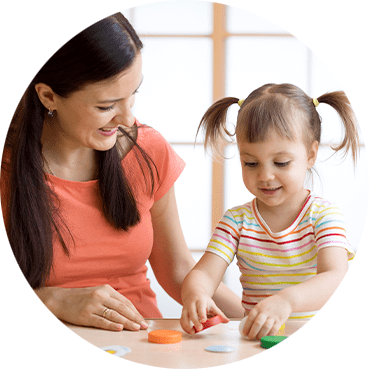ABA Therapy Explained
ABA stands for Applied Behavior Analysis, which, in simpler terms, is a method of therapy that teaches functional behaviors and new skills.
The goal of ABA is to promote appropriate behaviors and discourage inappropriate behaviors. ABA Therapy has a scientifically proven track record for success in helping children with Autism to improve cognitive, social, language, and daily living skills.

Customized ABA Therapy: Clear Goals, One-on-One Support & Family Integration
Focusing on Success
Language Skills
Teaching your child with Autism how to make their needs known and understood is an important part of the ABA process.
Skills Acquisition
If your child is struggling to master a specific skill, our ABA program will break down the process and help your child conquer the challenge like a champion.
Behavior Modification
ABA Therapy methods promote positive behaviors through reinforcement to get your child on track.
ADL Skills
(Activities of Daily living)
Simple things are hard for kids with autism. We use ABA Therapy to help your child manage everyday life tasks such as eating and dressing.
Social Skills
ABA therapy helps children with Autism learn valuable skills to encourage them to better integrate in social environments.
Executive Function
We work on issues that may be preventing your child from learning, like memory, self control and flexibility, and teach skills that will help your child succeed.
Parent Training
(because we're in this together)


